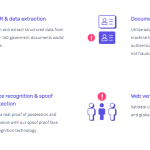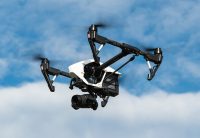What’s all the buzz behind “Industry 4.0”?
Industry 4.0 – Building the IIoT ecosystem the right way

Is Industry 4.0 just another buzz term that’s being hyped up by technology vendors with the aim of selling more products, or a legitimate trend that will transform sectors such as manufacturing in the months and years to come?
The evidence points to the latter. Industry 4.0, also referred to as the fourth industrial revolution, includes the heavy use of automation technologies and a greater exchange of data in manufacturing environments such as factories. Industry 4.0 got its name because it follows the earlier manufacturing phases of water/steam power, electric power and computing power.
The concept embraces technologies and delivery models such as cloud computing, big data/analytics, cyber-physical systems (CPS), robotics, augmented reality and the Internet of Things (IoT). In the age of Industry 4.0, manufacturing companies will be able to build and operate factories that are smarter than ever, so they can do things like easily customize products on demand from individual customers.
Collaborative technologies
The technologies driving Industry 4.0 will often work in collaboration. For example, CPS is powered by cloud services,
which enable intelligent objects and cloud-based programmatic modules to interact with each other.
New, smart factories will feature connected robots with access to big data/analytics capabilities, and technologies such as artificial intelligence, augmented reality, virtual reality, 3-D printing and other solutions will provide these facilities with agility, precision and efficiencies never seen before in a manufacturing environment.
As noted by management consulting firm McKinsey and Company, the concept of Industry 4.0 is more than just a flashy catchphrase. “A confluence of trends and technologies promises to reshape the way things are made,” the firm says.
Among these developments are a significant rise data volumes, computational power, and connectivity; the advancements in data analytics and business intelligence (BI) capabilities; the availability of new forms of human-machine interaction; and enhancements in the ability to transfer digital instructions to the physical world, such as advanced robotics and 3D printing.
See also: The key to smarter farms? IoT farm application ecosystems
McKinsey has advised companies to closely watch Industry 4.0 developments so that they can leverage new opportunities made possible by Industry 4.0 technologies. It says the traditional manufacturing business model is being replaced by new models, and in order to reap the benefits of Industry 4.0 technologies businesses must prepare themselves for the coming digital transformation.
The platforms that support Industry 4.0 applications need to be open systems that can evolve with changing demands and market trends, and be able to quickly leverage whatever new technologies emerge in the coming years.
Factories of the future will be dynamic organisms that can be shaped and reshaped as need be, and they will be connected more so than ever with other entities such as customer service centers, companies that supply raw materials, distribution channels, etc.
Whereas today’s manufacturing environment typically consists of production plants with an incompatible mix of automation technologies that are not designed to share data with other manufacturing systems, smart factories will leverage IoT cloud platforms to gain a layer of cybernetic intelligence that sits on top of a company’s manufacturing operations.

Dean Hamilton, Senior Vice President and General Manager of the Service Creation Business Unit, Accelerite.
Machine learning algorithms will be able to identify patterns and extract insights that can be used to optimize production operations. Predictive analytics will identify signs of system failures in one factory so that production can quickly be launched in other facilities. In this modern environment, data from factories is delivered to the cloud, where it can be visualized and exposed to powerful analytics that provide higher layers of orchestration than ever for companies.
For example, there’s a large manufacturer based in the U.K. that has factories all over the world. It’s looking to take all the data coming off its factory automation platforms and all kinds of devices, some in real time, and place it into a common cloud layer to create customized views of all this data. That will allow the company to see across all its operations and create efficiencies not possible before.
One of the key drivers of the smart factory that will be enabled by Industry 4.0 technologies is the push toward personalization in manufacturing. Instead of a factory churning out cookie-cutter versions of the same products at mass scale, it will be able to deliver highly customized products on a just-in-time basis the way a customer wants it.
Building the ecosystem
The potential of this future factory is not derived from what’s inside the enterprise, but outside. As beneficial as Industry 4.0 might prove to be for individual companies, executives in IT, operations and business need to look at this trend from a more holistic standpoint. They need to realize that the greatest returns will ultimately come from building an Industry 4.0 ecosystem that includes multiple market players involved in the process of designing, building, shipping and using products.
By linking together this ecosystem of partners in an Industry 4.0 environment, all of the individual components of the ecosystem are able to deliver greater value to the market. To put it in biological terms, instead of thinking in terms of individual cells it’s more about all the cells working together in a body, in a symbiotic relationship.
The Internet and specifically the cloud provide the framework necessary for organizations to work together more efficiently than ever, creating business and operational intelligence that can benefit partners within these interconnected business ecosystems.
One of the key technology components that will also enable the creation of Industry 4.0 partner ecosystems is application programming interfaces (APIs). Factories that expose APIs to partners will make it possible to create applications that work across a variety of systems.
To achieve this in an effective way, companies need to deploy a platform that enables them to share service-oriented application APIs throughout their partner ecosystem in a managed platform as a service (PaaS) model. Applications will be quickly reconfigured by business analysts instead of programmers to account for different sources and types of data. Applications will be deployed in the cloud service that is most appropriate and efficient for the business, and easily adjust to accommodate for differences in cloud vendor-specific data ingestion, storage, distributed computing and machine learning APIs.
By leveraging the power of APIs and the cloud, companies will build and share a new generation of manufacturing-oriented IoT applications that will be at the heart of Industry 4.0, and that will provide not just greater intelligence and efficiencies but transformative new business models that industries have never seen before.
Building the smart factories that are capable of manufacturing the unique, highly personalized products consumers and businesses will be looking for is highly dependent on exploiting the full potential of Industry 4.0. A new class of API platform, designed for the latest revolution in manufacturing, is now emerging and will help companies to rapidly develop, manage and even monetize the products of the future.
While much of this sounds futuristic, IT and business executives need to be looking at these technologies now if they want to help prepare their organizations for what’s to come. If they don’t, they risk getting a late start in the dramatic shift to Industry 4.0.
Interested in learning more about building an IoT service-oriented application ecosystem, optimized for targeted industry markets such as agriculture? Contact us for an introductory demo on the Concert IoT service creation and enrichment platform today.
This article was produced in partnership with Accelerite.
The post What’s all the buzz behind “Industry 4.0”? appeared first on ReadWrite.
(78)














